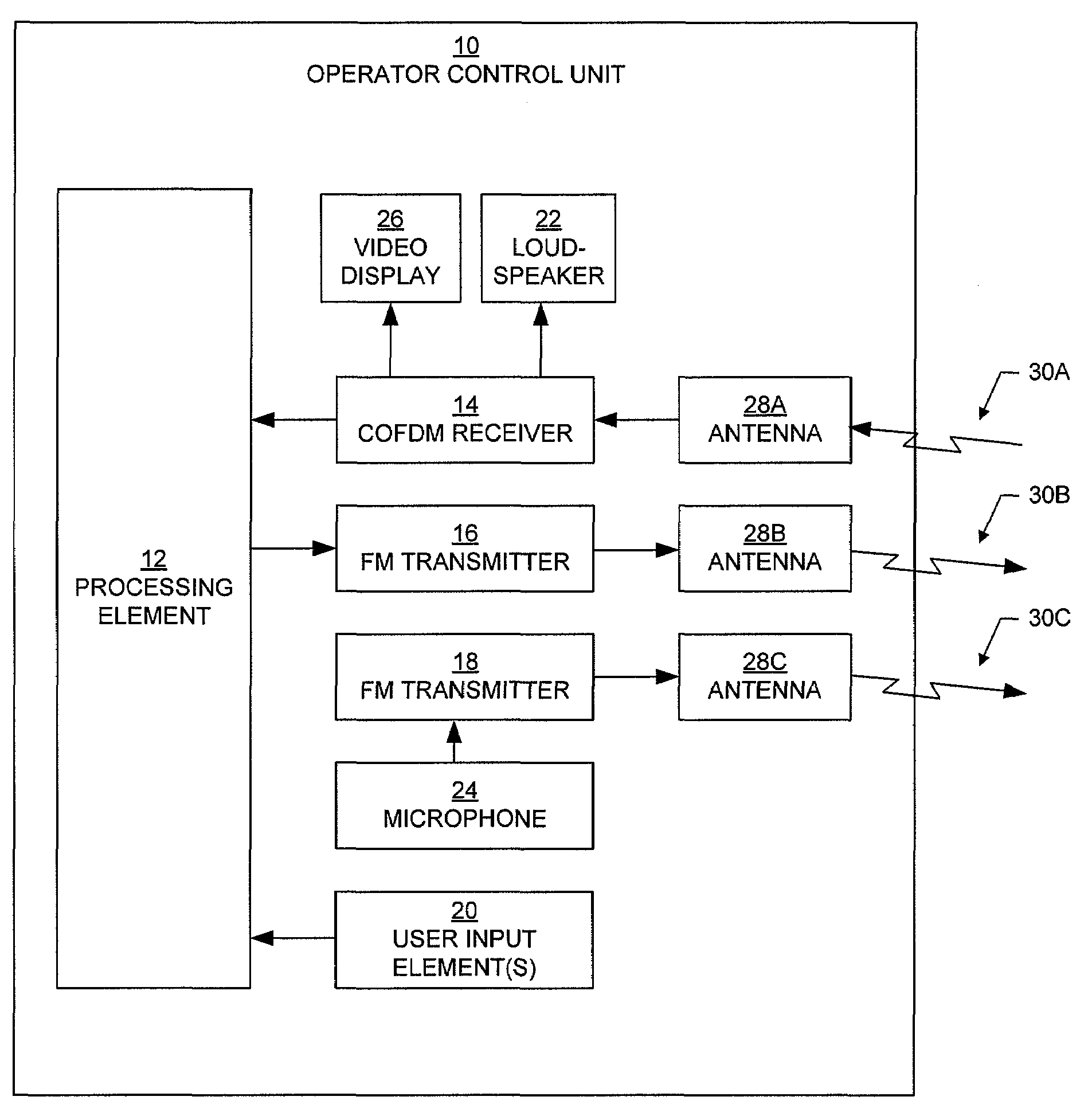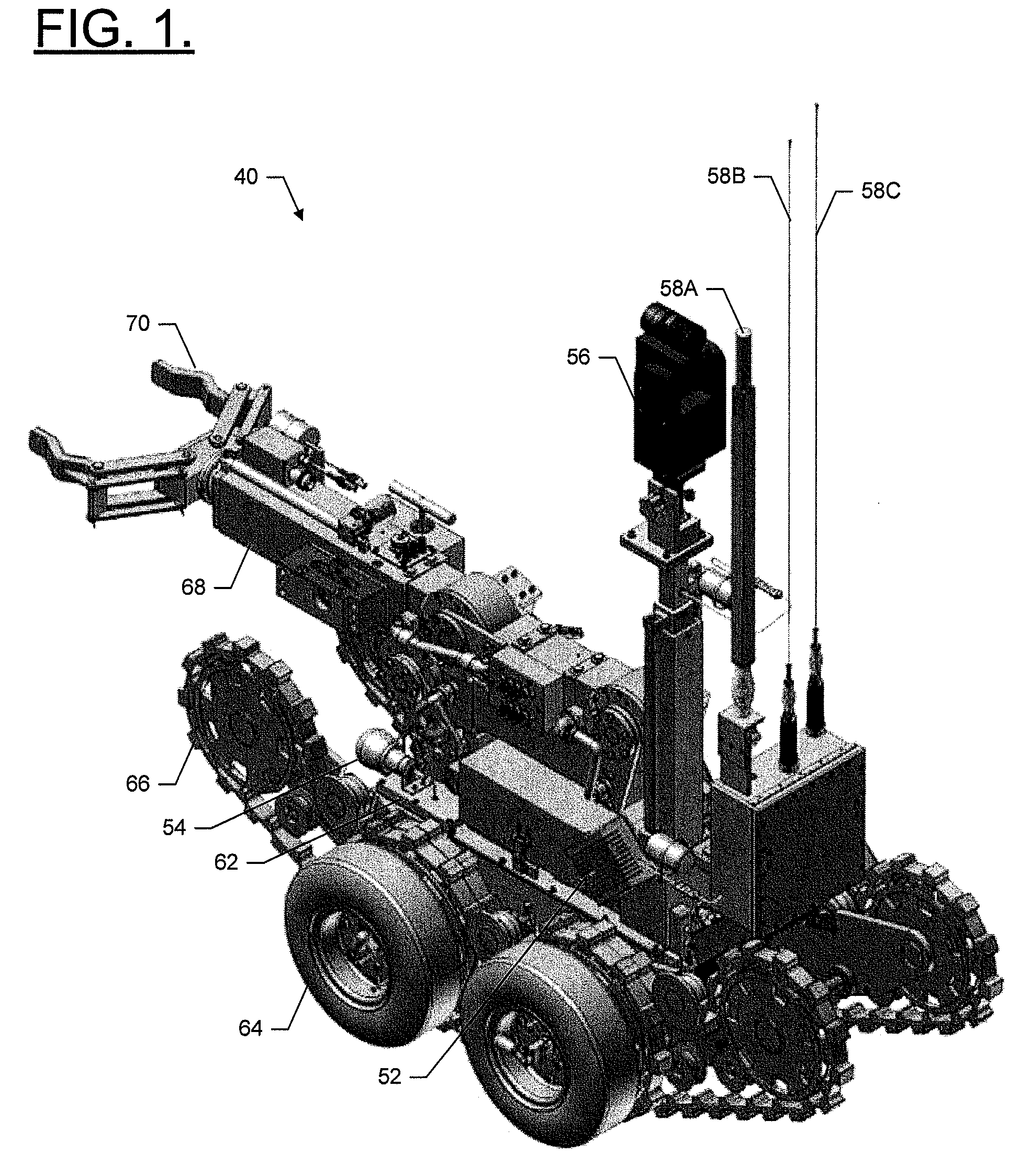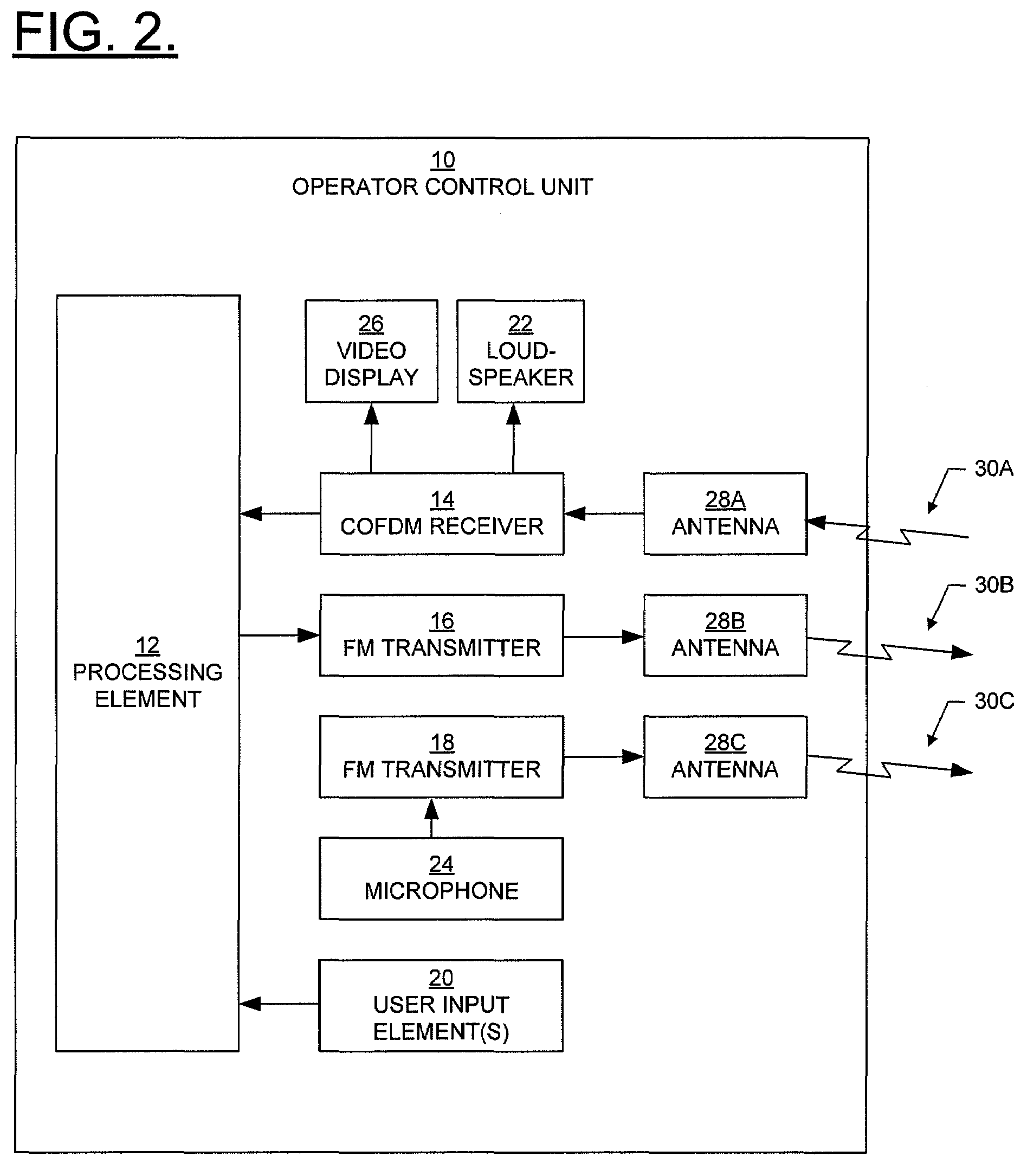Wireless control system for ground-mobile robotic vehicles
a robotic vehicle and wireless control technology, applied in the field of ground-based mobile robotic vehicles, can solve the problems of rf carrier modulation schemes with regulatory restrictions, performance deficiencies, and limitations of hardwired communication links that limit the distance that the ugv may travel
- Summary
- Abstract
- Description
- Claims
- Application Information
AI Technical Summary
Benefits of technology
Problems solved by technology
Method used
Image
Examples
Embodiment Construction
[0022]Exemplary embodiments of the invention now will be described more fully hereinafter with reference to the accompanying drawings, in which preferred embodiments of the invention are shown. This invention may, however, be embodied in many different forms and should not be construed as limited to the embodiments set forth herein; rather, these embodiments are provided so that this disclosure will be thorough and complete, and will fully convey the scope of the invention to those skilled in the art. Like numbers refer to like elements throughout.
[0023]The ground-mobile robotic vehicle of embodiments of the invention utilizes an RF modulation scheme not typically used for robotics applications, i.e., coded orthogonal frequency division multiplexing (COFDM). COFDM has many advantages over other types of RF carrier modulation, such as AM, FM, DSSS, FHSS, and WLAN based communications systems, for use in non-line-of-sight (NLOS) mobile applications. In particular, the multi-path video...
PUM
 Login to View More
Login to View More Abstract
Description
Claims
Application Information
 Login to View More
Login to View More - R&D
- Intellectual Property
- Life Sciences
- Materials
- Tech Scout
- Unparalleled Data Quality
- Higher Quality Content
- 60% Fewer Hallucinations
Browse by: Latest US Patents, China's latest patents, Technical Efficacy Thesaurus, Application Domain, Technology Topic, Popular Technical Reports.
© 2025 PatSnap. All rights reserved.Legal|Privacy policy|Modern Slavery Act Transparency Statement|Sitemap|About US| Contact US: help@patsnap.com



